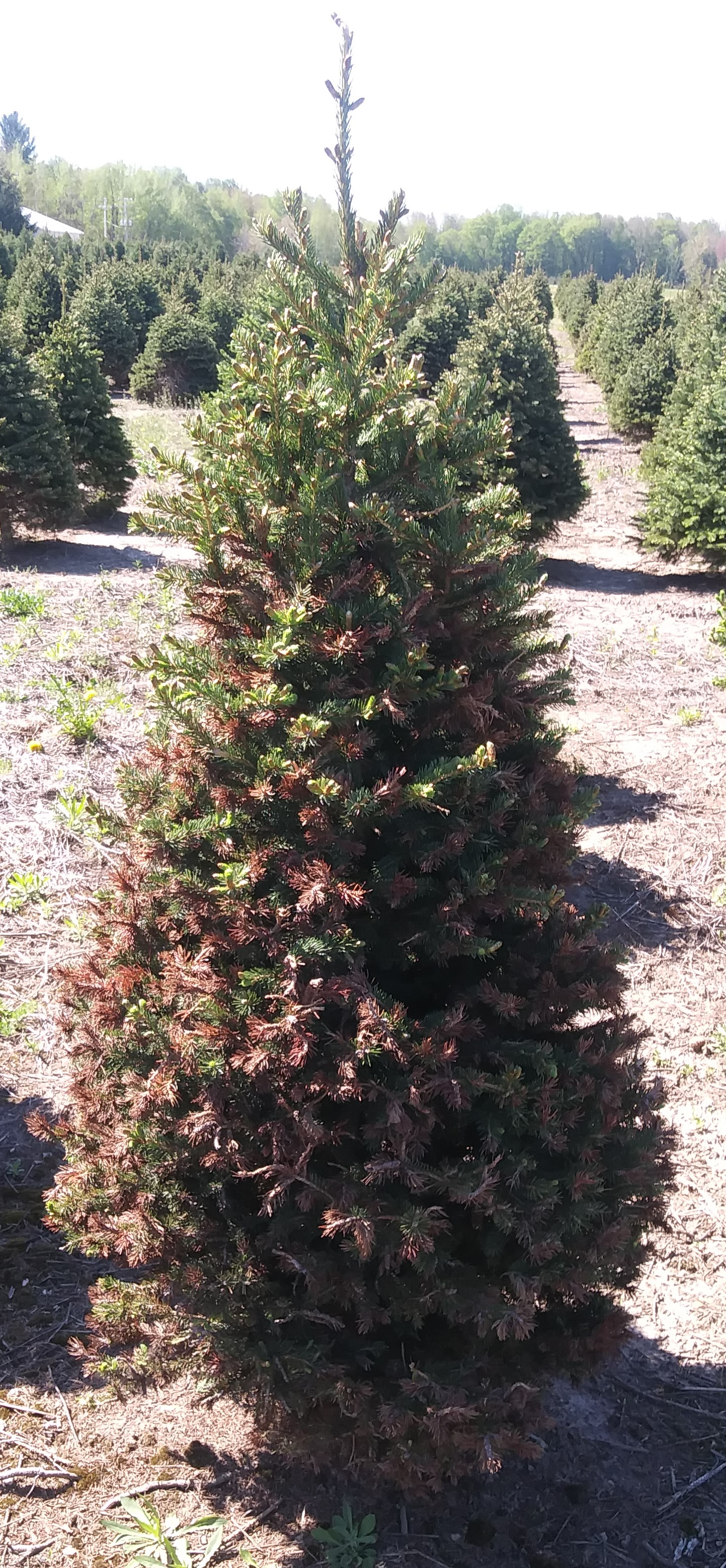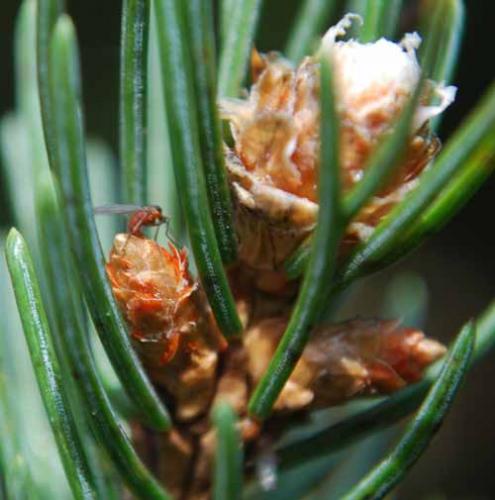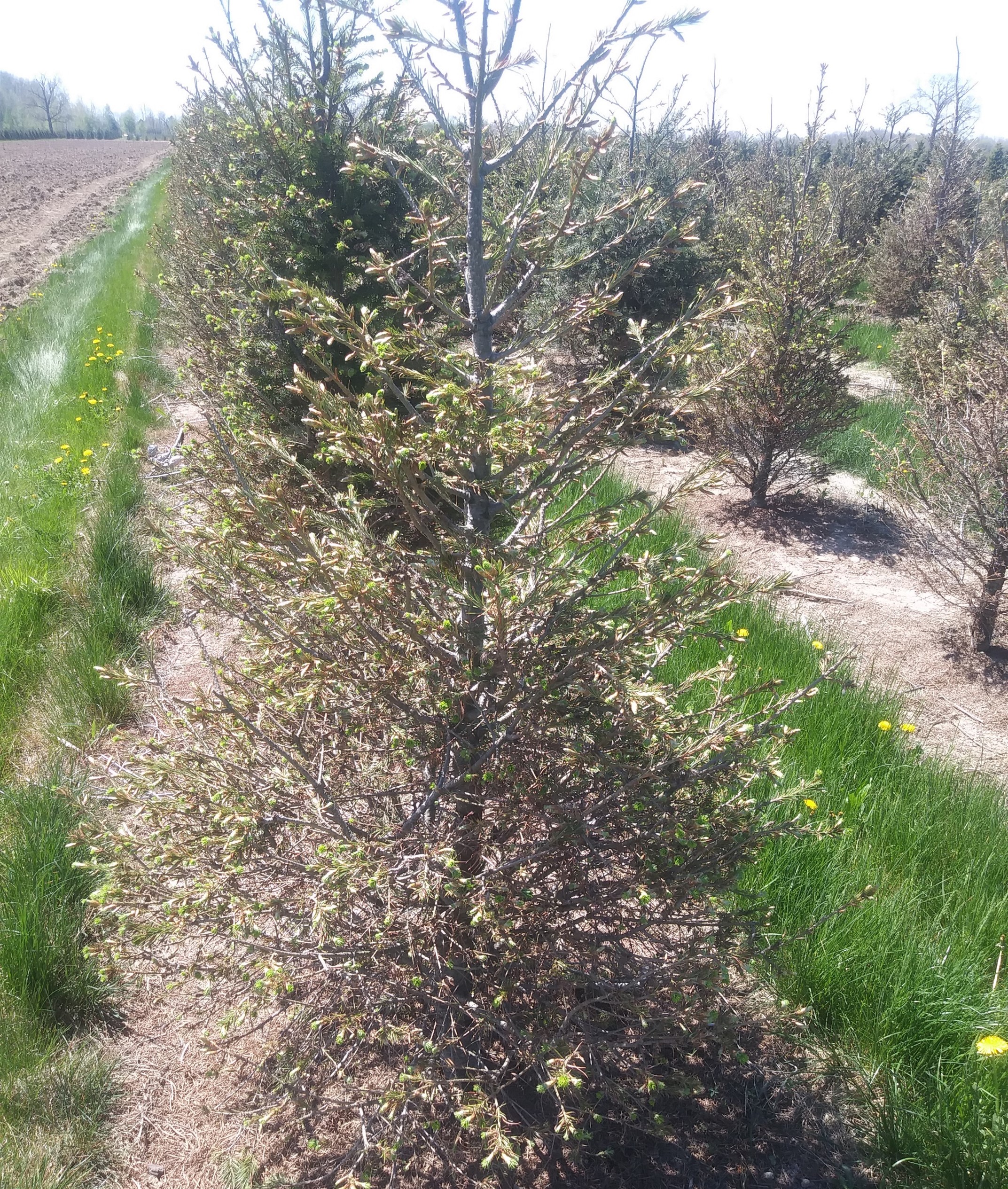Christmas tree scouting report - May 18, 2022
Severe spruce gall midge damage was found in several farms. Disease pressure increasing with new shoot growth.

Insect update
Severe spruce gall midge damage was found on trees at several farms in the Cadillac, Michigan, area. This insect colonizes white spruce and white spruce cultivars (e.g., Black Hills spruce) and may occasionally feed on Norway spruce. Midges cause long galls on one side of a twig or swollen twigs. Note that these galls are very different from galls caused by eastern spruce gall adelgid. Check out Photo 1 and also look at page 134 of the “Christmas Tree Pest Manual, Third Edition” to see twig damage.
Individual trees may be attacked repeatedly over the course of several years, resulting in an unsellable tree (Photo 2). If only a few galled shoots on a few trees are present, the affected shoots can be clipped off and destroyed in winter or early spring. It is too late to clip the galled shoots this year; recent observations indicate the adult midges have already emerged from the galls. Removing galled twigs at this time will not provide meaningful control. Trees with abundant galled, swollen and dead shoots will likely need to be culled.

Insecticide treatment opportunities are narrow and must target newly emerged spruce gall midge adults. Given the small size of the midges, spray coverage will need to be thorough. Monitor presence of adult midges by hanging a few yellow stick traps in the canopy of affected trees. Many midges, including spruce gall midge, are orange or have an orange abdomen that will help you identify them (Photo 3).

Disease update
Needlecast cast disease treatments will soon be needed. Tree species that are highly susceptible to needle cast diseases include Colorado blue spruce, Douglas fir and Scotch pine. Left untreated, needlecast diseases can cause significant injury to trees (Photo 4).

Although there are different causal organisms for each species, treatment options remain the same. Applications of preventive chemical control products such as mancozeb or chlorothalonil can be applied between 0.5 and 2 inches of new shoot growth. Always read and follow all label directions. Make sure the specific product has Christmas tree listed on the label. For highly susceptible species like Colorado blue spruce, re-application should be considered at two-week intervals for the first month after initial application.
Needlecast disease development is favored by warm, moist conditions, therefore improving air-flow through the tree canopy can be helpful. For example, eliminating weeds, wider planting spacing, and timing of irrigation intervals can help to reduce the time that needles are wet each day.
Pesticide update
The Environmental Protection Agency (EPA) has discontinued Chlorpyrifos (Lorsban) use in edible crops. However, non-edible (Christmas trees) crops labels remain valid. Even though these products remain labeled for Christmas tree application, supply issues have emerged. Since the label for edible crops has recently been amended, Michigan Department of Agriculture and Rural Development (MDARD) officials have denied agricultural supply companies from selling chlorpyrifos products that have the outdated label on package. MDARD officials are waiting on guidance from the EPA on how best to proceed. Growers who have the product can continue using as pest pressures warrant applications.
Weather update
Due to the recent heat wave, we have gained growing degree days at a rapid pace. Michigan has gone from about a week behind normal in growing degree days, to anywhere between three and seven days ahead of normal in growing degree day accumulation. (Photo 5).

Farm practice update
Growers are wrapping up the spring planting for 2022. Pre-emerge herbicide and fertilizer applications have been completed. Michigan State University Extension recommends implementing regular scouting for signs of insect and disease pressure.



 Print
Print Email
Email
